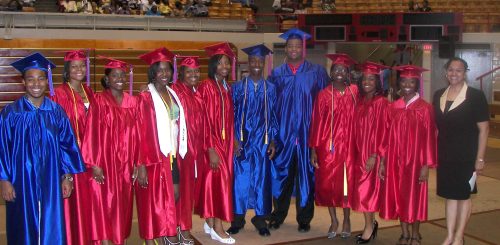
Music Creation from Students’ Homes During Pandemic
December 3, 2020The COVID-19 pandemic continues to leave a destructive path in student learning, decimating or weakening otherwise healthy music programs and leaving many of the most important aspects of our children’s educational experience on life support. Fortunately, there is a cure, and the shift to remote learning hasn’t destroyed the music. In many ways, it has made the music stronger, as this New York educator discovered.
Travis Washington is a general music teacher at P.S. 072, Dr. William Dorney, in the Bronx. He teaches Choir and the Young Vocal Scholars Program. Before the pandemic, his class enjoyed learning through live performances. However, when schools closed, all that changed, and they were forced to adapt to virtual learning. During the initial transition, they discovered that online learning options such as Soundtrap could not only extend projects they were currently working on but also expand music education in many ways.
When the COVID-19 pandemic hit, the district couldn’t continue live Choir performances; they immediately searched for a remote solution and found Soundtrap. Washington began the choir remotely with some students who weren’t being served music at all. To his surprise, he discovered there were far more students interested in music who now had access to laptops at home.
Here are some comments from Washington’s students who are currently using Soundtrap:
ISA: “We started using something that wasn’t really a collaborative thing. We couldn’t do everything together. I was doing a project that I couldn’t share. I would have to give classmates a link, but they couldn’t add to it. That’s when Soundtrap came, and we all got to do it together. It was pretty fun and cool.”
ANGIE: “With the music class, it was more about learning the standard stuff, the basic stuff. But in Soundtrap, we would make the songs our own, and we would make a beat, and we would put stuff together. I never thought it would be this much fun and entertaining. It was amazing. There was no limit to our imagination.”
JOHN: “At first, it was the fact that you would have fun in Soundtrap by just creating the tracks and listening to them. What I found out through using it is that there are different things you can do inside of it. You can create your own track. You can literally change the sound of your voice.”
ISA: “When you saw kids that you thought weren’t really into music, you would almost think Soundtrap was giving them a hidden gift. They’re like, ‘Wow, I’m actually good at this,’ and they realize that they do want to make music, and they do really like music.”
ANGIE: “These are people whom you would never think would like making music. They don’t even sing. But with Soundtrap, it helped them open up and unlock a whole new world. Especially for people in quarantine who didn’t have stuff to do but now that Soundtrap was open for everyone, it saved them from those depressing times in quarantine.”
Examples of their work:
Stopdropandrollcuzthisbeatsfire��� from MindRocket Media Group on Vimeo.
LastdayofschoolByDJJJ from MindRocket Media Group on Vimeo.
Beatleap-18D077AC-4D33-46FA-9B5A-1BE06C85D4B7 from MindRocket Media Group on Vimeo.
Opportunity in disguise
The quarantine proved to be an advantage in disguise. Washington was able to do far more instruction virtually with Soundtrap than with in-class learning. Previously, he saw students once a week, and the most advanced students 3-4 times a week for 45 mins. However, during the lockdown, students kept creating over the summertime, doing far more work hours than they did during the regular school year. Most kids avoid logging into anything that resembles school work, but they were motivated and excited to learn. Soundtrap revolutionized Washington’s classroom in a virtual setting as the students became more engaged than ever before.
 EDU Portal
EDU Portal


